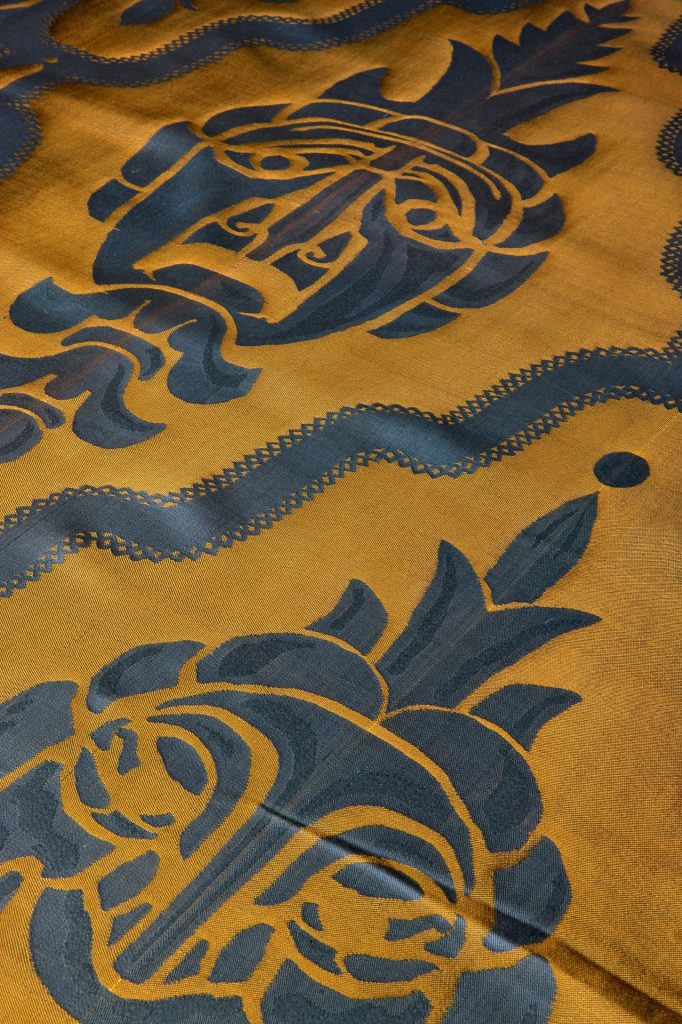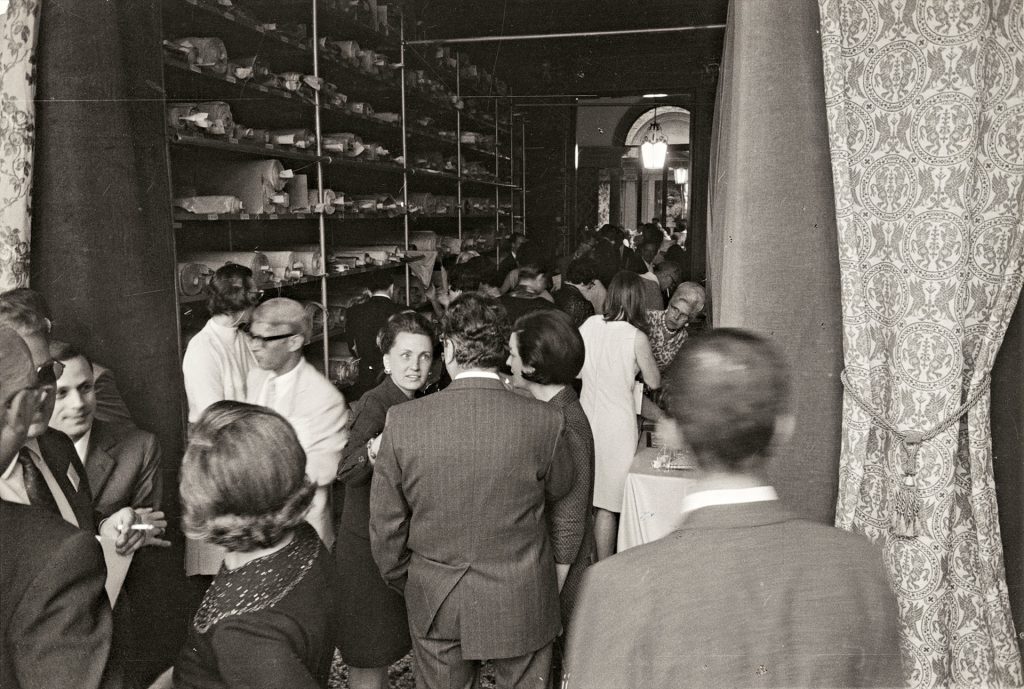THE FOUNDATION
“The past has revealed to me the structure of the future.” – PIERRE TEILHARD DE CHARDIN
Betting on the future by symbolically returning to our origins: this is the challenge that led the attorney Alessandro Favaretto Rubelli, Member of the Order of Merit for Labor and President of Rubelli S.p.A., to create the Rubelli Foundation in 2018. The Foundation’s scope is to promote and disseminate the cultural, historical and contemporary heritage of Rubelli S.p.A., both by enhancing the material assets in which it is reflected and by creating projects and initiatives that raise awareness of Rubelli’s corporate culture in connection with the country’s broader cultural heritage.
The Foundation opens the doors of the 14th-century Palazzo Ca’ Pisani Rubelli, the centuries-old home of the Rubellis, with a renewed exhibition program and an ambitious digital archiving project.
Located in the heart of Venice, it’s a privileged place for the preservation of the oldest documents of the Rubelli Historical Archives, from the year of its foundation in 1889 to the present day. It also houses the Collection of Purchases.
A RICH HISTORY
In 1889, at the age of forty-two, Lorenzo Rubelli, the founder of the company, bought the 18th century Venetian factory of Giovanni Panciera, which he had inherited from Giovanni Battista Trapolin in 1835.
The purchase of the mill and its subsequent transformation into a modern weaving mill testify to the contribution of this skilled entrepreneur, first a diplomat and then a businessman, to the revival of Venetian textile art, which had almost completely disappeared due to the repressive policies of Napoleon and the Austrian rule.
Under the leadership of Lorenzo Rubelli, the company embarked on its cultural and productive journey, firmly anchored in the family succession that continues uninterruptedly from his son Dante Zeno to his grandson Alessandro Favaretto Rubelli today.
AT THE VANGUARD:
between tradition and technology, and family and industry
1. The handwoven soprarizzo velvet, of course. Rubelli immediately became known throughout Italy and the world for this fabric and for the skill with which he recreates an age-old tradition Firmly rooted in tradition which, however, is never just a tiresome repetition of themes and forms, but on the contrary, the basis for a constant search for the new and the beautiful.


2. 2. The soprarizzo velvets were soon joined by other productions, guaranteed by Rubelli, but entrusted to a growing core of outside manufacturers, each among the best in their field: damasks, brocades and brocatelles, joyeries, fabrics of the most diverse brands.
3. It is first of all a mindaset: the desire to seize that the best the world has to offer – inspirations, ideas, resources, materials – to create a modern company that produces ever more beautiful and high-quality fabrics.
Since the initial opening of new branches in Italy, Rubelli fabrics have contributed to the elegance and refinement of the most prestigious national and international venues.


4. 4. But what is it that binds these aspirations together? What is the factor that can combine innovation and tradition, industrialization and meticulous craftsmanship, internationalization, and the unmistakable scent of Venice’s canals? It is the family imprint that gives the company its character. From the leadership of Dante Zeno to the heroic deeds of Alessandro Favaretto Rubelli, and still today, the sense of a company made up of people, of mutual care and sincere participation in the lives of fellow workers and in the local area.
5. INTERVIEW WITH FAVARETTO RUBELLI
WHO WE ARE
The company was founded by the lawyer Alessandro Favaretto Rubelli.
The governance of the Foundation is entrusted to the President, the Board of Directors, and the Auditor. The Director, appointed in accordance with Article 11 of the statute, works with the President and the Board of Directors to ensure the good management and administration of the Foundation. They manage its organization and administration, as well as the promotion of approved initiatives, and implements the resolutions made by the Foundation’s bodies.
PARTNERSHIPS
The Foundation works with art historians, textile experts and teachers, designers, technicians, archivists, photographers, and design and communication professionals. Each professional contributes to the challenges set by the Foundation for the valorization of its heritage and for social and territorial cohesion.